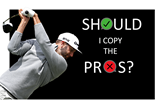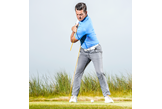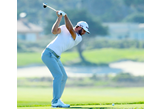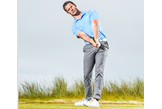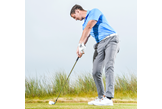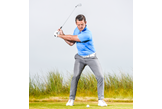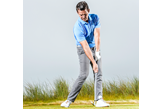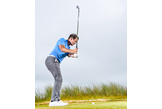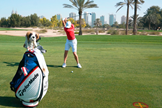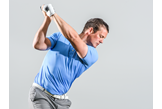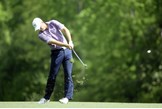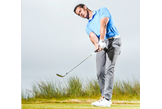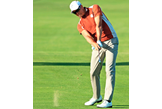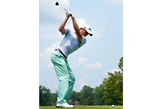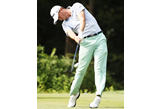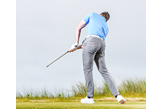Should I copy the pros? 3 things to try and 3 things to avoid
Published:
Three things you should try… and three things you should avoid when trying to copy the pros
Ah, golf’s most famous left wrist. Dustin Johnson has had some pretty fantastic success with this strangely bowed joint, reaching world No.1 and winning a US Open. But does it mean we should all be courting dislocation by putting it into play?
Tour pros may display the best swings on the planet, but they shouldn’t necessarily be a role model. These guys are in the prime of their lives – young, flexible and strong, and spend all their time working on their swings and their conditioning. That allows them to find positions and groove moves that only full-time dedication can make work.
For the part-time golfer, trying to copy them is not always a good idea. DJ’s bowed wrist is one of six tour techniques we examine here that might or might not be worth you working into your practice. But which camp does it fall into? Turn over to find out..
These tips come from top 50 teacher Gareth Johnston: Calcot Park, Berkshire PGA Professional and Director of Golf
DO! USE BODY ROTATION OVER QUIET LEGS
PRO MODEL: RORY McILROY
Of the many admirable traits Rory’s swing contains, his ability to rotate his upper body over a solid foundation is an excellent example for any amateur to follow. It gives his action balance and sequencing, two elements that go a long way to explaining some of the effortless power he creates.
You may not have Rory’s range of movement and will not be able to generate his sort of clubhead speed, but if you copy the principle of body rotation over quiet legs you will experience a step-up in both distance and consistency
FRAME YOUR MOTION
To train core rotation over quiet legs, stick a cane or shaft into the ground just outside your trail foot, its angle following your trail leg. Place a second across your shoulders and pin it there with criss-crossed arms.

BACKSWING COIL
They key here is to wind those shoulders as far as they will go without your trail leg pushing against the cane. Keep turning until you feel the lower body resisting any further rotation; try to maintain that gap between your knees. This drill helps you train a better shoulder turn, and feel the correct resistance of your lower body. Work on this drill and, over time, your flexibility, range of motion and power will improve.

DON’T! BOW THE LEAD WRIST
PRO MODEL DUSTIN JOHNSON
DJ is at the top of an estimable lift of lead wrist bowers that includes Jon Rahm and Brooks Koepka. Before you start thinking this is part of some secret new technique, it’s important to realise these golfers have been making this move throughout their careers.
Because it has the effect of delofting the face, the bowed lead wrist is often seen in players who grew up playing in the wind; and because it can strengthen the face, it is also sometimes a consequence of a relatively weak grip. These players make it work through great mechanics and their ability to move the club on a good plane, but for the non-elite player it can cause two major problems.

1. HEEL STRIKE
Bowing the lead wrist often makes us raise the handle as the club swing down and through, which creates a more vertical shaft angle and plane. Typically, you will end up pushing the neck of the club out towards the ball… and with irons that can mean a shank.

2. PLAYING HOOKY
The bowed lead wrist closes the face (it looks at the sky at the top) and indeed the poor shot of DJ et al is a big left. If you tend to leave the face open from a sound, neutral grip, then bowing the lead wrist is not a bad thing to work on; but if you already play with a typically square or strong face, this move will see you hit big hooks.

DO! OPEN OUT THROUGH IMPACT
PRO MODEL HENRIK STENSON
“Keep your head down” has to be one of golf’s worst pieces of advice. Instead of a free and natural rotation through the ball, the golfer who follows this ‘wisdom’ stays down, back and stuck behind the ball, the club typically swinging weakly up the line with the face flipping over.
Henrik is a great example of the counter move; as the club swings through his head and upper body rotate with it, his chest facing the club through the exit zone. This promotes a more neutral delivery, allowing the club to exit with natural rotation and on a better plane. Follow his lead and you’ll gain more consistency. Here is a drill to help.

SPLIT-HAND DRILL
Take your 8-iron, but split your hands on the grip so the trail hand is half on rubber, half on steel. Now simply hit shots like this. The lower trail hand forces trail arm and shoulder to work harder to release the club, helping you train the feeling of the upper body opening out better through impact.

NATURAL ROTATION
Take the feelings you developed with the split-hand drill into your swing. As you swing through, allow your chest and head to rotate with the club. You will feel the club rotating naturally back to the inside, with the more stable clubface square to that arc. This will help you hit accurate shots more often.

DON’T! CREATE A HIGH LEAD ARM AT THE TOP
PRO MODEL: JUSTIN THOMAS
Justin is one of the highest profile examples of the tour pro who creates a steep left (lead) arm at the top of the backswing, the hands very high. This more upright lead arm can be beneficial as it permits a longer, wider swing arc and more power; swing back more across your chest and your arc shortens. But for the average golfer, this is a dangerous move to copy; here’s why.

OVER-THE-TOP
While that upright lead arm creates a wide arc, it also promotes an upright plane to your action. For the club golfer an upright plane typically encourages a steep start to the downswing, the club “outside” the ideal swing path. This means pulls and slices.

BACK TO PLANE
Justin – and other upright backswingers like DJ – shallow this upright backswing plane by a strong lower-body downswing move; by aggressively rotating their hips, they drop the club into a more neutral delivery position. Watch these guys at impact and it’s amazing how open to the target they are.

SHOULDER REFERENCE
The club golfer can of course try to repeat this shallowing move, but it takes a level of flexibility and athleticism that is often beyond him. A more practical solution is to find a more comfortable backswing plane, hands above the trail shoulder, that needs less downswing flattening.

DO! USE THE GROUND
PRO MODEL: BROOKS KOEPKA
Brooks is a fine example of how tour pros use the ground so well to create leverage and power. By employing the famous “squatting” move from the top, Brooks increases knee flex and ground pressure, allowing him to use the ground’s resistance to push against. Naturally, the lower body bears the brunt of this work, especially the glutes, thighs and knees. Here’s a simple thought to get you using the ground better.

KNEES TOWARDS TARGET
From the top, make it your swing thought to drive both knees aggressively towards your target. This one thought improves your sequencing by encouraging your lower body to lead the downswing, and also good weight shift into your lead side. To drive your knees forwards you also need to need to push downwards, into the ground. Practise the move and you will feel how pressure increases under both feet. The more aggressively you drive, the more downforce you create… and that’s ideal for building power in your action.

DON’T! HOLD THE FACE SQUARE THROUGH IMPACT
PRO MODEL JORDAN SPIETH
Watch Jordan through the ball and you will see a release pattern designed to hold the face square for as long as possible after impact. This might seem a move based on logic – hold the face square for longer and surely you increase your chances of a straight shot. But in fact Jordan’s is an anti-left move, based on a early career where he fought a hook. More than trying to hold the face square, he is trying to stop it rotating closed. But for the typical amateur, it’s the last thing you should be copying.

WINGING IT
Consider your move through the ball, from waist-high to waisthigh. The inclined plane of the golf swing promotes a natural extension of the arms through this zone, plus a rotation of the forearms, hands and clubface – indeed the face moves broadly from toe-up to toe-up. Try to hold the face square through this and you are fighting this natural motion. The famous “chicken wing” – lead elbow away from the side – is the telltale sign..

EXIT STRATEGY
OK, if you are fighting a hook like Jordan you can experiment with holding the face square. But some 90% of club golfers leave the clubface open to the path or target at impact, hitting a slice. You need more rotation through the impact zone, not less; work on seeing the leading edge of the clubface mirror your spine angle as the club exits the impact zone.


